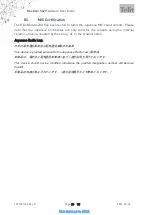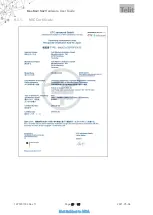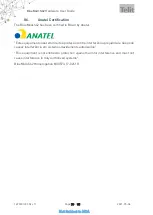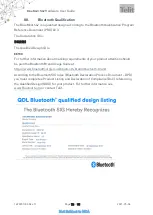
S42
Hardware User Guide
1VV0301303 Rev. 11
Page 57 of 85
2021-05-06
Not Subject to NDA
7.
APPLICATION DIAGRAM
The following schematic shows a typical hosted application of S42. The module
is connected to some MCU running the application layer. MCU and S42 use the
same 3,3V power supply
The serial interface has RTS/CTS flow control and UICP support in this example. The
optional hangup feature to close down the link is provided. As an option to save power an
external slow clock crystal may be used. The 32,768kHz crystal can be placed on
customers HW or may be optionally on module. Contact Telit sales. All other module pins
may be left unconnected.
Host MCU
VDD
GND
+3V3
GPIO (o)
In this example S is connected to an MCU supporting UICP, RTS/CTS flow control and Hangup.
The slow clock oscillator (32,768kHz ) is optional; it helps to save power during power down states.
S42/AI
E-6,F-6
VSUP
B-1 EXT-RES#
UART-RXD
UART-TXD
UART-CTS#
UART-RTS#
GPIO[4]/Hangup
TXD (o)
RXD (i)
RTS# (o)
CTS# (i)
GPIO (o)
XL-IN/SLCK
32,768kHz CRYSTAL
The crystal is optional. Leave A-6 open
if the crystal is not present.
B-4
D-4
A-6
all GND pads (14) must be connected.
Blocking capacitors not shown.
pushpull or OD
pushpull
A-5 XL-OUT
D-2
F-4
F-3
D-7
IUR-IN#
D-5
IUR-OUT#
GPIO/DTR# (o)
GPIO/DSR# (i)
Figure 25: Typical Application Schematics
















































